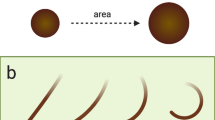Abstract
Non-invasive methods are particularly suited for evaluation of the dynamics of hair growth and/or hair growth arrest. In particular, the duration of the growth phase of each individual follicle cannot be repeatedly estimated by invasive methods, i.e. skin biopsies which give an ‘irreversible snapshot’ of a dynamic process.
Computer-assisted image analysis (CAIA) is available, and high-quality pictures are prerequisite to the automated data treatment procedure. In this paper, we compare figures obtained from shaved scalp areas (96 mm2, taken twice at a 48 h interval) with three photographic methods and evaluate their relative interest in relation with automatic CAIA. Slides were taken under, standardized enlargement (x3) and lighting (Medical Nikkor®, Nikon). The three methods are as follows: (0) without preparation, (1) immersion photography with mineral oil or (2) with application of a glass slide without immersion.
All figures were subjected to the following procedure: a preselected window of each image is automatically scanned (IBAS II, Kontron, FRG) and binary pictures obtained with a given threshold value (pixels of hair density (h∂) ≠ scalp density); hair growth is estimated as: ([area of h∂ 48 h after shaving — area of h∂ immediately after shaving]/area of scanned window).
Our results are based on the observation of 50 pictures. By visual examination, a better contrast between hair and scalp was obtained by immersion photography. The latter also reduced the third dimension. Blurred pictures were generated by method (2) and data from method (0) were obscured by the presence of squames and sebum.
By automated CAIA, however, the number of discrete zones with h∂ is extremely variable due to the presence of segments of varying density within a single hair. As a rule, an artificially high number of hair segments were recorded.
In order to reduce such artefacts, further improvements of software are necessary. This will also help to prevent the potential bias introduced by the observer during interactive selection of ‘hair’ and ‘non-hair’ zones in a given picture.
Access this chapter
Tax calculation will be finalised at checkout
Purchases are for personal use only
Preview
Unable to display preview. Download preview PDF.
Similar content being viewed by others
References
Courtois M, Giland S, Grollier JF. A contribution to the study of the growth and shedding of hair. In Capelli e Medecina Estetica -Hair andAesthetic Medicine. (Montagna W, Serri F, Bartoletti L, Celleno L, Morganti F, Secchi, GF, eds), pp. 43–53. Salus Internazionale, 1984
Bouhanna P The phototrichogram: a technique for the objective evaluation of the diagnosis and course of diffuse alopecias. In Capelli e Medecina Estetica - Hair and Aesthetic Medicine (Montagna W, Serri F, Bartoletti L, Celleno L, Morganti F, Secchi, GF, eds), pp. 277–280. Salus Internazionale, 1984
Gibbons RD, Fiedler-Weiss VC. Computer-aided quantification of scalp hair. Der-` matol Clin, 4, 627–640, 1986
Gibbons RD, Fiedler-Weiss VC, West DP, Lapin G. Quantification of scalp hair: a computer-aided methodology. J Invest Demiatol, 86, 78–82, 1986
Guarrera M, Ciulla MP. A quantitative evaluation of hair loss: the phototrichogram. JAppl Cosmetol, 4, 61–66, 1986
Pelfini C, Calligaro A. Some notes on the evaluation of hair growth by means of morphometric computerized analysis. JAppl Cosmetol, 4, 67–76, 1986
Author information
Authors and Affiliations
Editor information
Editors and Affiliations
Rights and permissions
Copyright information
© 1989 Kluwer Academic Publishers
About this chapter
Cite this chapter
Van Neste, D., Dumortier, M., De Coster, W. (1989). Phototrichogram analysis: technical aspects and problems in relation to automated quantitative evaluation of hair growth by computer-assisted image analysis. In: Van Neste, D., Lachapelle, J.M., Antoine, J.L. (eds) Trends in Human Hair Growth and Alopecia Research. Springer, Dordrecht. https://doi.org/10.1007/978-94-011-7873-0_16
Download citation
DOI: https://doi.org/10.1007/978-94-011-7873-0_16
Publisher Name: Springer, Dordrecht
Print ISBN: 978-94-011-7875-4
Online ISBN: 978-94-011-7873-0
eBook Packages: Springer Book Archive




